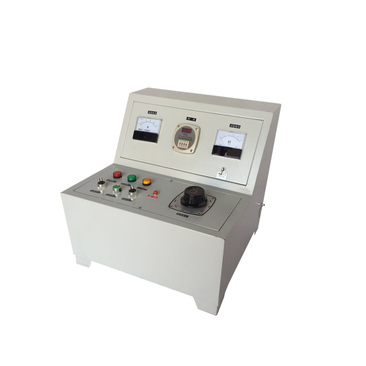China's Insulation Resistance Testing Methods and Standards for Electrical Safety
Understanding Insulation Resistance Tests in China Significance and Practices
Insulation resistance tests are critical for assessing the integrity of electrical insulation systems in various applications, from residential wiring to industrial machinery. In China, where rapid industrialization has intensified the need for reliable electrical systems, these tests play a crucial role in ensuring safety, performance, and compliance with national and international standards.
What is Insulation Resistance Testing?
Insulation resistance testing involves measuring the resistance offered by insulating materials against electrical current leakage. The test is typically performed using a megohmmeter, which applies a high voltage (usually between 250V to 5000V) to the insulation and measures the resistance in megohms (MΩ). A higher resistance indicates a better insulating quality, which is essential for preventing short circuits, electrical shocks, and equipment failures.
Importance of Insulation Resistance Tests
1. Safety Assurance The primary goal of insulation resistance tests is to ensure safety. Faulty insulation can lead to severe electrical hazards, including electric shocks, fires, and equipment damage. By conducting regular insulation tests, companies can mitigate these risks significantly.
2. Preventive Maintenance Insulation resistance testing serves as a preventive maintenance measure. Regular testing can identify potential issues before they escalate, allowing for timely interventions that can save time and costs associated with unplanned downtimes.
3. Regulatory Compliance In China, various safety standards govern electrical installations across different sectors. Performing insulation resistance tests helps organizations comply with these regulations, avoiding potential legal issues and ensuring that their installations meet national and international standards.
4. Quality Control For manufacturers, especially in the electronic and electrical sectors, insulation resistance tests are vital for quality control. It ensures that products are tested before delivery, thus maintaining the brand's reputation and reducing the occurrence of failures in the field.
Testing Procedures and Standards
In China, insulation resistance testing follows specific procedures and standards. The most commonly used standards are the GB standards set by the National Standardization Administration of China. These standards provide guidelines on the testing frequency, acceptable resistance values, and reporting methods.
china insulation resistance tests

The procedure typically includes
1. Preparation Ensure all equipment is powered down and isolated to prevent accidental shocks during testing.
2. Connection Connect the megohmmeter to the insulation under test. Ensure that all connections are secure to obtain accurate readings.
3. Testing Activate the megohmmeter and observe the resistance readings. Note that the resistance value should typically exceed 1 MΩ or higher, depending on the specific application.
4. Evaluation Analyze the readings against industry standards and historical data for the equipment. A significant drop in resistance values over time may indicate deterioration in insulation quality.
5. Reporting Document the results for compliance and future reference, allowing for trend analysis over time.
Challenges and Considerations
While insulation resistance testing is crucial, it is not without challenges. Environmental factors such as humidity and temperature can affect measurements, necessitating careful consideration when planning tests. Additionally, the industry requires skilled personnel to interpret results accurately and make informed decisions based on the data.
Conclusion
Insulation resistance tests are invaluable in ensuring the safety and reliability of electrical systems in China’s fast-paced industrial environment. With stringent safety regulations and a growing emphasis on quality control, these tests will continue to play an essential role in preventing electrical hazards and maintaining operational efficiency. Investing in proper testing procedures and skilled personnel will undoubtedly yield significant benefits for both manufacturers and consumers, paving the way for safer and more reliable electrical systems.
-
Why the Conductor Resistance Constant Temperature Measurement Machine Redefines Precision
NewsJun.20,2025
-
Reliable Testing Starts Here: Why the High Insulation Resistance Measuring Instrument Is a Must-Have
NewsJun.20,2025
-
Flexible Cable Flexing Test Equipment: The Precision Standard for Cable Durability and Performance Testing
NewsJun.20,2025
-
Digital Measurement Projector: Precision Visualization for Modern Manufacturing
NewsJun.20,2025
-
Computer Control Electronic Tensile Tester: Precision and Power for the Modern Metal Industry
NewsJun.20,2025
-
Cable Spark Tester: Your Ultimate Insulation Assurance for Wire and Cable Testing
NewsJun.20,2025
 Copyright © 2025 Hebei Fangyuan Instrument & Equipment Co.,Ltd. All Rights Reserved. Sitemap | Privacy Policy
Copyright © 2025 Hebei Fangyuan Instrument & Equipment Co.,Ltd. All Rights Reserved. Sitemap | Privacy Policy
